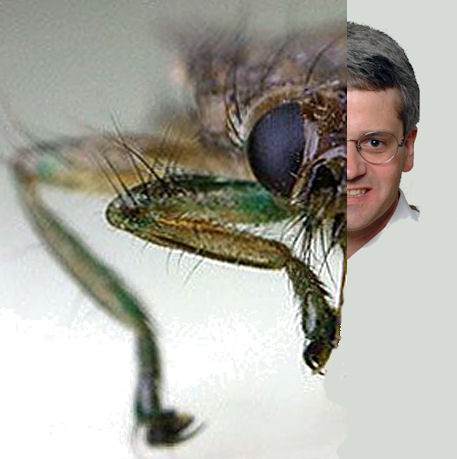Teleportation
by Andrew Boyd
Today, we teleport. The University of Houston's College of Engineering presents this series about the machines that make our civilization run, and the people whose ingenuity created them.
Teleportation is a captivating idea. Step into a booth, push a button, and poof -- you're in Hong Kong. It would certainly be worth the price of a coach class plane ticket.
Teleportation is a favorite topic of science fiction writers, and with good reason. It instantly takes characters to exciting new places. But the process of teleportation is just as alluring. David Page Mitchell's 1877 A Man Without a Body deals with teleportation gone haywire as the machine fails mid-transmission. So does the The Fly, a short-story-made-movie with the simple message, "never teleport with a fly in your booth." Even Mike Teevee discovers the perils of teleportation in Willy Wonka and the Chocolate Factory as he travels via the experimental "Wonkavision."
It's easy to suspend disbelief, living in a world where we routinely send information electronically. When I stand at the fax machine, I can instantaneously send a document anywhere in the world. The process of "document teleportation" is an engineering marvel, involving everything from digital imaging technology to signal transmission through a worldwide communications network.
So will we one day develop a teleportation device that can take us to Hong Kong? It'd be quite an engineering feat, but it's plausible. Isn't it? Let's think about it.
The fax machine doesn't actually send my document, it sends a facsimile. When the recipient sees my document, I still have the original. With teleportation, the goal is to send the original. Think of it as a fax machine where my document disappears as it's converted to energy. That energy is sent to the receiving fax machine, which reconstructs the original right down to the last atom. That's a pretty stiff requirement. Heisenberg's Uncertainly Principle tells us it's impossible. It simply can't be done perfectly.
But here's a question. Is it absolutely necessary for a teleporter to send the original? If I want to go to Hong Kong, why not send instructions on how to build a perfect replica of me, just like the fax does. The receiving teleporter then builds me using atoms found in Hong Kong.
That raises some interesting questions. Is the replica of me really "me?" And if the new me is me, what do we do with the original? Sounds like more science fiction. But that's exactly how quantum teleportationworks.
In 1993, a group of scientists proposed a way to get around Heisenberg's principle. They could get all the information they needed to make a perfect replica. And the process destroys the original.
The theory works. In the last decade and a half, experimentation with subatomic particles has proven that quantum teleportation is real. We're teleporting over longer and longer distances. We're even thinking about how to use this new technology.
It's exciting, but don't expect to see teleportation booths any time soon. The human body is just made up of too many particles. But that does not stop us from imagining what might be. Alas, our craving for that teleportation booth is a great deal more imaginable than it is achievable.
I'm Andy Boyd, at the University of Houston, where we're interested in the way inventive minds work.
For more on quantum teleportation, click here.
